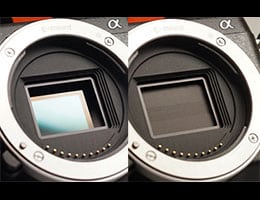 What is described as a shutter is what allows it to be shuttered . This verb (obturate), meanwhile, refers to blocking or covering a channel or hole through the application or introduction of some element.
What is described as a shutter is what allows it to be shuttered . This verb (obturate), meanwhile, refers to blocking or covering a channel or hole through the application or introduction of some element.
In the field of photography , the mechanical operating device that, in a camera, is responsible for controlling how long a film or sensor is exposed to light is called a shutter. We can distinguish three types of shutter: the single-leaf shutter, the central one (also called lamellae ) and the focal plane (or curtain ) shutter.
The single leaf shutter is considered primitive, as its design is basic: it consists of a minimum of one pivoting metal blade that in its normal state does not allow light to pass through the lens and reach the film; When the opening of this type of shutter is activated, the leaves move so that the objective lens is uncovered for as long as the exposure requires (the period of time in which light can penetrate), until it finally closes again.
In the design of the central shutter we find a series of blades whose opening is radial , something similar to what happens with the diaphragm, another of the essential devices of the camera since it allows us to regulate the amount of light that enters. in it. This type of shutter is used in large format lenses, twin lens SLRs and also some medium format lenses.
Generally, the central shutter is located on the lens and has the advantage of being able to synchronize with the flash regardless of the speed of the latter; Its disadvantage, on the other hand, is that it cannot operate at an exposure speed greater than one five hundredth of a second, that is, one second divided into five hundred.
 The focal plane shutter can be found in any single-lens reflex camera, which uses a single lens for focusing and viewing the image. It is located in front of the light-sensitive device and, in almost all cases, is made up of two curtains whose movement occurs in the same direction: one for closing and the other for opening.
The focal plane shutter can be found in any single-lens reflex camera, which uses a single lens for focusing and viewing the image. It is located in front of the light-sensitive device and, in almost all cases, is made up of two curtains whose movement occurs in the same direction: one for closing and the other for opening.
The operation of the focal plane shutter can be explained as follows: when we press the shutter button, a curtain descends and thus begins the exposure ; Later, when the exposure time we have indicated ends, another curtain moves to close the window through which the light has entered the film. Compared to the central shutter, the focal plane shutter is not as easy to synchronize with the flash; This occurs because at high speed the closing of the second curtain may overlap with the opening of the first, generating an unwanted sweep of light.
Shutter speed is the time in which the shutter remains open. Expressed in seconds and fractions, it allows control of the light that comes into contact with the photosensitive element.
In a general sense, it can be said that when the shutter is opened for a very short time, a small amount of light reaches the film or sensor and movement is reduced or frozen. On the other hand, if the shutter is left open for a long time, more light passes through and blurred images are captured.
When the shutter remains open for a long period of time, and therefore there is a long exposure time, it is best to use a tripod to take the image. Otherwise, the pulse vibration tends to cause the photo to lose sharpness due to shaking.
